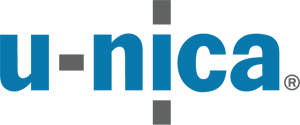
Counterfeit organisations are determined to make vast profits, especially from vehicular fakes. Automotive companies are often a sought-after target for counterfeiters, in part because of the complexity of their products which provides many opportunities to imitate.
Global counterfeiting rings have established a black-market economy that could be worth trillions of dollars in the next few years. There’s literally no product that is safe and, unfortunately, the automotive industry is one of the most lucrative avenues for counterfeiters.
The focus of this counterfeiting sector is mainly sourcing logistics and the distribution of spare parts. Here are some insights on how the automotive industry can identify and be proactive against risks.
The big fake with little parts
Unlike a name brand purse, a car is a lot bigger to counterfeit. It is definitely not easy to fake the whole vehicle. This is why many counterfeiters fake as many little parts as possible. An article by Sophie Peressonin the World Trademark Review provides a thorough look at the scale of the problem which, like the issue it spotlights, can be broken down into smaller parts.
Supply chain vulnerabilities are on the rise for legitimate automotive manufacturers who lose over $2bn annually to fake tire and battery sales respectively. Counterfeit airbags, brake pads, and engine consumables like oil and air filters can conclude in serious injury or even death for a driver unlucky enough to install these fakes.
Like counterfeits in every other market, these products may look genuine, but they are utterly without value when put to the test. Counterfeit tires don’t grip roads, engines catch fire and seat belts come undone. Take India as an example, where 20% of all vehicle accidents are the result of counterfeit parts.
How this problem quickly became a pandemic
The flood of counterfeit items into the automotive sector is due in large part to the rapid proliferation of online sales platforms offering almost every vehicle component. China is the major country that is responsible for 85% of the fake car parts flooding America. Many consumers are consistently fooled by the near-perfect packaging counterfeiters employ and are often ignorant of the red flags, but there are also those who think a quick deal on a suspicious part won’t hurt.
However, cars, like other machines, are intricate, some containing over 1,800 separate components. That’s 1,800 ways counterfeiters could create and sell fake goods. The difference of a fraction of an inch on a tire tread or screw head may save consumers money but cost them their lives.
Anti-counterfeit security steps for the automotive sector
Thankfully, public awareness initiatives like the UK’s have been underway for some time, and organizations such as the Automotive Anti-Counterfeiting Council, a coalition of the 11 American leading vehicle manufacturers, are working hard to bring greater attention to this deadly trade.
Since the online marketplace is such a hotbed for counterfeit sales, major e-commerce sites like eBay have taken steps to develop anti-counterfeit policies. Amazon is a particularly stringent example of ways companies can employ anti-counterfeit regulations. Consumers may also report suspicious vehicle components to groups like the Automotive Aftermarket Suppliers Association, which aims to have greater awareness.
Protecting your brand’s reputation
The terrible potential for personal injury from a counterfeit product is a constant threat to brand value and consumer faith. Here are three key ways you can defend your brand’s reputation:
Leverage supplier homologation
Also called a Certificate of Conformity, homologation strictly vets car parts to verify that they comply with regulatory standards. Organisations that have undergone this process may be trusted by manufacturers and consumers to produce parts that meet OEM specifications.
Protect production plants, processes and warehouses
Anywhere that vehicles are assembled or the parts stored is an extremely vulnerable site. Counterfeiters who gain access to a factory floor can use illegal photography to hijack your intellectual property or outright steal original components for after-market sale or use the products as counterfeit templates.
Implement an end-to-end, multi-tiered security posture
Just as every component part of a vehicle must be protected, so must every stage of your own product’s lifecycle. Companies in the automotive industry require safeguards for the whole production process from conception and design to manufacturing, packaging and distribution.
Take counterfeiters off the road with U-NICA
Brand value and product protection are at the heart of our scryptoTRACE® solution, a fully scalable, rapid-response answer to counterfeit concerns that covers the entire product cycle.
It’s been designed by a diverse and dedicated team to integrate smoothly with your existing processes and protect the integrity of your intellectual and physical property across regions and around the world.
U-NICA is a team with a single purpose: supporting you in the fight to protect your brand’s integrity and value. Our staff operates globally and partners with universities and agencies to deliver the future of brand protection.

